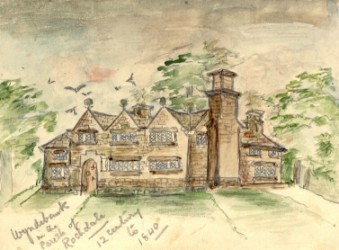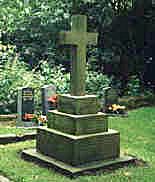|
Richard Ashton Lightoller was born in 1818 in Chorley, Lancashire, and christened on 13 December 1818. His parents were Timothy and Ann Lightoller nee Ashton.
The Lightoller family were originally from Rochdale in Lancashire. They were one of the first to adopt power looms in their mills. In 1826 their rented Water Street mill received the onslaught of the loom-breakers recorded in William Turnerís Riot.
He was the oldest of seven children, his brothers and sister being George Henry, Jane Georgiana, John Bailey, Charles William, Robert and Frederick James. The youngest brother should not be confused with another of the same name who was Richard's son.
Richard and his brother George were organists at Saint George's Church in Chorley.
On the 2nd of June 1841 Richard Ashton married Anne Lovelady at Sefton, Lancashire. Anne was a Roman Catholic. They were married in the Church of England. They set up home at Yarrow Bridge House in Chorley. Yarrow Bridge House was on the site where today stands a modern primary school overlooking the River Yarrow.
On the 6th of January 1842 their first son, Frederick James, was born. He was possibly named after Richard's brother of the same name who may have died. Richard's father Timothy died on the 24 of March 1842. Richard and his brother George took over the running of the three cotton spinning mills.
Other children followed: Thomas Henry was born on the 27 of November 1843, Mary Jane on the 20th of August 1845, Emily Marietta on the 6th of February 1847, and John William on the 25th of July 1850.
Richard Lightoller was the Justice of the Peace for the County of Lancaster.
Legislation had changed in the cotton industry. From 1847 no one under the age of eight could be employed in a textile mill. From age eight to twelve children could become "half-timers", that is, they worked either from 6 a.m. until 1 p.m. or from 1 p.m. until 6 p.m. All children had to attend school three hours a day. From age thirteen, children could be employed from 6 a.m. until 6 p.m. - the same hours as for women. There was a break of thirty minutes every five hours. Holidays were Christmas Day and Good Friday, as well as eight half days each year.
Richard had entered the cotton business at a difficult time. Of England's 2,300 mills, 1,900 of them were in Lancashire. Cheap cotton was no longer available from America. In Lancashire, the only way to keep the mills open was for the workers to accept a cut in wages. In the Chorley mills in November 1861, there was a strike against reduced wage rates. The workers were forced back to work on new terms. Seven hundred were out of work in Chorley alone. By February 1863 twenty-five per cent of the Chorley population were near to starving. In April 1863, some unemployed men went on strike in the Chorley cemetery in support of a six hour day. But by June 1865 the cotton famine was over.
The 1865 Post Office Directory of Lancashire has Richard and George and their families living at Yarrow House, and a Miss Lightoller living at 12 Park Road. The 1871 Census describes Richard as employing 400 in the cotton mill.
Doreen Goodman remembers that there was a Lightoller aunt of her mother's, called Amy, who lived in England who had the initials A.M.L. These are the initials on a desert spoon that Doreen's mother gave her along with a tea spoon. It is possible that these could have belonged to Anne Mary Lightoller (A.M.L.) who was Richard's brother's daughter. Doreen used to have an inventory of household items, mainly dinner ware, that Frederick brought to New Zealand. Although Janet Lightoller got most of it, the desert spoon and tea spoon were part of it.
On the 7th of September 1863, Anne and Richard's oldest son, Frederick, married Sarah Jane Widdows. Their daughter, Mary Jane, married Peter Widdows on the 12th of August 1869.
Many in Chorley got scarlet fever. Richard's daughter-in-law, Sarah Jane nee Widdows, died 1874, along with two grandchildren, Caroline Mary and his name-sake Richard Ashton Lightoller. On the 4th of August 1875, Richard's brother and business partner, George Henry, died. Frederick, Richard's oldest son, was left to do a lot of the mill business.
In 1881 Richard and Anne's daughter, Emily Marietta, died aged 34. She was unmarried.
Richard and Anne Lightoller retired to Wood Street, Lytham, Lancashire - a rather well-to-do beach resort.
Richard died in Chorley on the 7th of January 1885, aged 67 years, of Bright's Disease. He died at the home of his brother-in-law, Henry Lovelady. Henry's wife, Mary, was a nurse, and she cared for him in his last days.
|
|

Wyndebank, the original Lightoller home at Rochdale


The Lightoller family plot at Brindle


Richard's son Frederick


Saint George's Church


The church organ
|
 1818 - 1885
1818 - 1885 
 1818 - 1885
1818 - 1885 








